Do you have a question about the Samsung S27AG50 Series and is the answer not in the manual?
General safety instructions and warnings for product usage.
Precautions related to electrical safety and power usage.
Instructions and precautions for installing the monitor.
Guidelines for safe product operation and warnings.
Precautions for handling the product and maintaining eye health.
Step-by-step guide for cleaning the monitor screen and exterior.
Recommendations for maintaining correct posture while using the monitor.
Detailed steps for attaching the monitor stand to the display.
Guidelines and warnings for safely moving the monitor.
Ensuring adequate space for ventilation to prevent overheating.
Instructions for adjusting the monitor's tilt and height for optimal viewing.
Steps and cautions for rotating the monitor display.
Instructions for using an anti-theft lock to secure the monitor.
Steps for securely attaching the monitor to a wall mount bracket.
Explanation of the monitor's control panel buttons and power LED.
Guide to using shortcut keys for quick access to game settings.
General guidelines for connecting source devices to the monitor.
Identification and description of all input/output ports on the monitor.
Instructions for connecting the monitor using HDMI and DisplayPort cables.
Guide for connecting headphones or earphones to the monitor.
Instructions on using the monitor as a USB hub for connecting devices.
Steps for connecting the monitor to a power source.
Instructions for neatly organizing connected cables.
Guide to setting the optimal screen resolution for the best picture quality.
Adjusting the screen refresh rate for optimal gaming performance.
Optimizing response time and reducing screen tearing with sync technologies.
Adjusting screen ratio for immersive gaming.
Minimizing lag, enabling aim point, and adjusting dark scenes for gaming.
Controlling LED lighting and other game-specific display features.
Adjusting the screen size and aspect ratio for different content types.
Selecting preset picture modes for various viewing environments.
Adjusting brightness, contrast, and sharpness for optimal image clarity.
Fine-tuning color settings like tone, saturation, and gamma.
Adjusting black levels and activating eye-comfort mode.
Settings for enabling and configuring Picture-in-Picture (PIP) mode.
Settings for enabling and configuring Picture-by-Picture (PBP) mode.
Adjusting sub-screen placement, size, and aspect ratio.
Changing the menu language and display duration.
Adjusting local screen brightness and audio volume.
Optimizing power saving and configuring automatic power-off timers.
Setting the input mode to PC or AV for optimal display.
Selecting DisplayPort and HDMI versions for optimal video transmission.
Auto source switching, key repeat, VRR control, and custom key setup.
Managing power LED and using VRR control for reduced flicker.
Running diagnostics and updating monitor software via USB.
Viewing software info and resetting monitor to factory defaults.
Installing screen partitioning software and essential drivers.
Troubleshooting installation problems and checking system requirements.
Preparations before contacting support and basic troubleshooting steps.
Diagnosing screen problems and checking resolution/frequency.
Resolving blank screen issues with HDMI/HDMI-DVI connections.
Troubleshooting power, connection, and 'Not Optimum Mode' messages.
Fixing distorted, blurry, or unstable images and text.
Addressing choppy video playback and other image quality problems.
Resolving issues with no sound or low volume.
Addressing beeping sounds heard during PC boot-up.
Guide to changing monitor refresh rate and screen resolution via PC.
Steps to configure power-saving modes in Windows operating systems.
General specifications including model name, size, and display area.
Information on Plug-and-Play compatibility and pixel characteristics.
Table listing supported resolutions, frequencies, and ports for S27AG50*.
Explanation and troubleshooting of FreeSync technology for AMD graphics cards.
List of AMD graphics cards compatible with FreeSync.
Explanation and troubleshooting of Adaptive-Sync technology for NVIDIA graphics cards.
List of NVIDIA graphics cards compatible with Adaptive-Sync.
Guidelines for the correct disposal of the product as electronic waste.
| Screen Size | 27 inches |
|---|---|
| Resolution | 2560 x 1440 (QHD) |
| Panel Type | IPS |
| Response Time | 1ms (GtG) |
| Brightness | 350 cd/m² |
| Contrast Ratio | 1000:1 |
| Aspect Ratio | 16:9 |
| HDR | HDR10 |
| VESA Mount | 100 x 100 mm |
| Viewing Angle | 178° (H) / 178° (V) |
| Refresh Rate | 165Hz |
| Adaptive Sync | NVIDIA G-SYNC Compatible |
| Connectivity | 2x HDMI 2.0 |
| Color Gamut | sRGB 99% |
| Stand Adjustments | Tilt, Swivel, Pivot, Height |

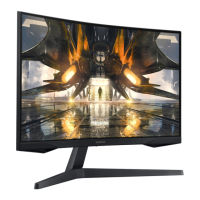



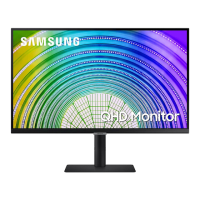
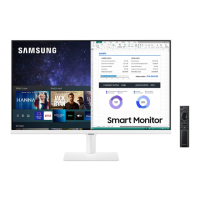
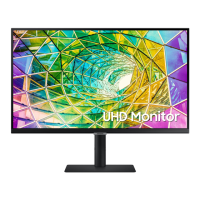
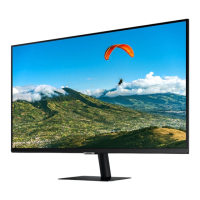



